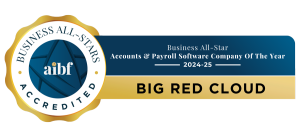You’ve got the idea for an awesome product that people can’t do without. You have the supplier who can deliver products on a reliable schedule. You’ve set up your accounting software to track your expenses and sales. You are almost ready to open your small business doors.
So what is holding you back?
You may have no idea about what price to set for your products. Price your products too high and customers will go to your competition. Set your prices too low and you won’t cover your business overheads as customers will be suspicious about the quality of your products.
Creating a pricing strategy: research the market
The market segment that your product will be placed in will offer data that you can use to determine the best price. From finding out the current established market price for similar products to learning how customers rate your product based on its value, these are just a few of the details gleaned from market analysis. Look at what customers are willing to pay for the product and how much of a long-term success it will be at that specific rate.
Check out the competition
You need to understand how your competitors post their prices. Figure out who the competition is and the products they sell. Compare how your products stack up to their items, what key features their products offer, and what type of competitive edge your items have over the competition’s products. Having these answers will allow you to understand if you can charge more or less for your product to garner customers’ attentions.
Developing your pricing strategy
With market analysis and competitor data, you can sit down and figure out what prices you can set for your products. Here are three tips that can help you develop a solid pricing strategy.
- Sit down and go over the bookkeeping with an accountant to determine your actual overhead costs. Then you can determine what your gross margin has to be to pay for all costs while turning a profit. Then you can ensure that you are not under-pricing your product.
- Figure out your cost benchmarking, which is where you check out what your costs for products and production processes are as you compare them to industry standards. If the industry averages for gross profit and net profit are off from your figures, then your prices may not be set right or your operational costs are too high for your industry sector.
- Your positioning of the product is important. If you have a luxury product, customers expect for the costs to be higher. The same tactic is true if you are offering discounted products at lower prices. People do understand that they get what they pay for, and will pay higher prices for products that they know are higher quality.
There are numerous pricing tactics that your small business can use. You can use introductory discounts for new products to get customers interested in your business, offer varying prices throughout the week based on customer demand, and provide bundled pricing when offering additional products at one cost.
The most important strategy when setting prices is to always periodically review your set price and change it according to the market trends so you make the most money.




